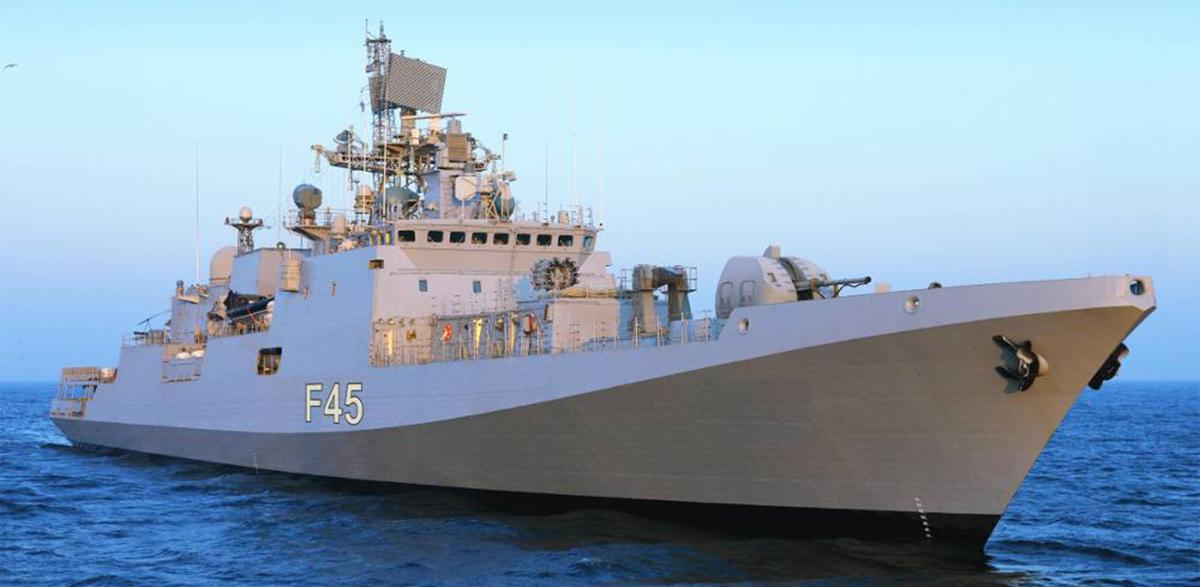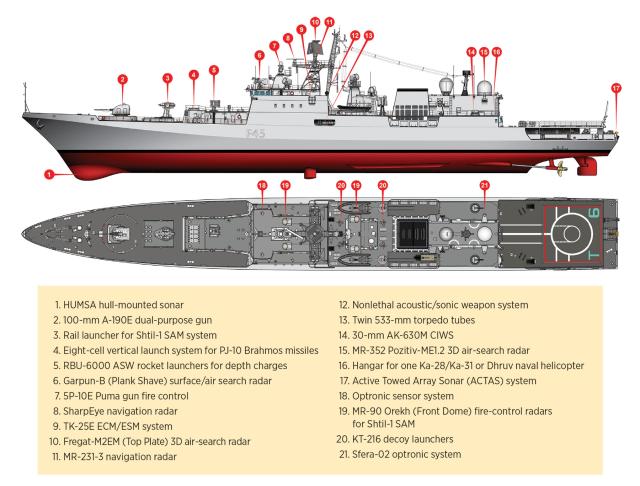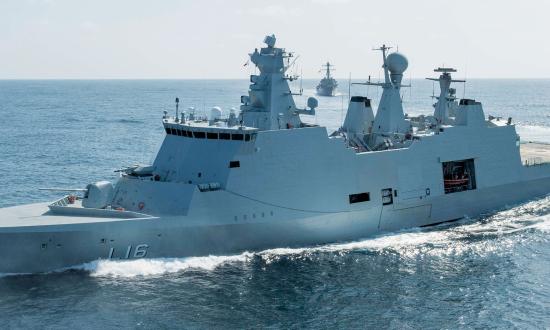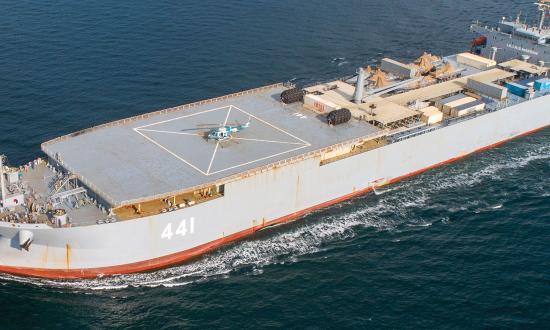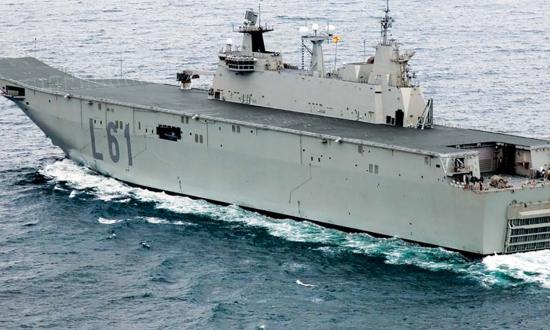India’s Talwar-class frigates (Project 11356) form a core element of the Indian surface fleet and help establish a transitional bridge to more advanced domestically produced classes of the future. The warships are near sisters of Russia’s Admiral Grigorovich (Project 1356M) class, featuring the same hull that has been shaped to reduce radar returns and incorporate modest signature-reduction measures.
The first three Project 11356 units—the Talwar, Trishul, and Tabar—were built between 1999 and 2004 at Russia’s Baltiyskiy Shipyard in St. Petersburg. Construction on the next three (Batch 2) ships—the Teg (pictured), Tarkash, and Trikand—took place at Yantar Shipyard in Kaliningrad between 2007 and 2013. The seventh and eighth Talwar-class frigates (Batch 3) are currently under construction in Kaliningrad and have been named Tushil and Tamala. The final ninth and tenth units of the class are being built locally in India at Goa Shipyard, with delivery expected toward the end of the decade.
The Talwar class measures roughly 410 feet long, with a 50-foot beam and 15-foot draft. The ships displace 3,500 tons and operate with a crew of 180. They are fitted with a propulsion system of Ukrainian origin that incorporates two DS-71 cruise gas turbines and two DT-59 boost gas turbines, two shafts, and fixed propellers. This COGAG (combined gas turbine and gas turbine) propulsion provides a top speed of 32 knots and a cruising range of 4,500 nautical miles (nm) at 15 knots.
The first three Project 11356 frigates were equipped with an eight-cell VLS launcher carrying Russian 3M-54E Klub-N antiship missiles, which have a range of 119 nm. Later frigates, beginning with the Batch 2 variants, are instead armed with eight PJ-10 Brahmos ramjet-powered antiship missiles developed under a joint venture between India and Russia. The Brahmos has a range of 157 nm and maximum speed of Mach 2.8.
All active Talwar-class frigates carry 24 surface-to-air missiles (SAMs) for the rail-launched Shtil-1 SAM system, which has a range of 24 nm. Batch 1 frigates carry two Kashtan/CADS-N-1 point defense systems that incorporate the short-range SA-N-11 SAM with 30-mm guns. The Batch 2 warships carry two AK-630M 30-mm close-in weapon system (CIWS) Gatling guns instead. A hangar and flight deck large enough to accommodate one naval helicopter are fitted aft on all units. The ships also carry a 100-mm gun forward and short range antisubmarine warfare (ASW) torpedoes and rocket launchers.
Sensors include air and surface-search radars and a hull-mounted sonar. Several units of the class, including the Talwar and Teg, have recently been photographed carrying a towed-array sonar from the stern. All ten frigates may eventually be fitted with similar systems to enhance their submarine-hunting capabilities.




